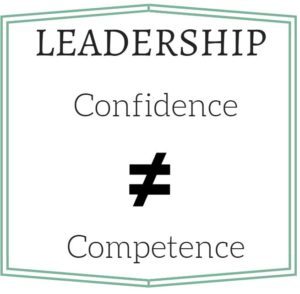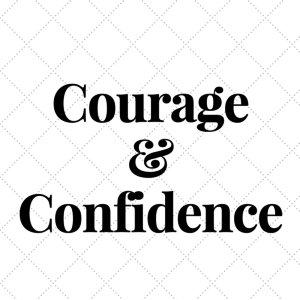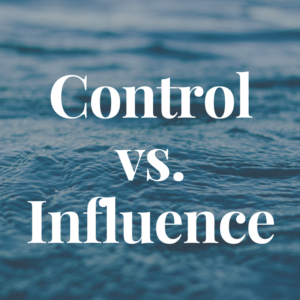Mary E. Marshall's Blog, page 20
June 27, 2018
Leadership: Confidence Does Not Equal Competence
 I was recently asked why there are still so few women in leadership positions in business. I was reminded of an article from 2013 in the Harvard Business Review that is still as relevant today as it was then. (And keep in mind, as you read further, the author is a man.)
I was recently asked why there are still so few women in leadership positions in business. I was reminded of an article from 2013 in the Harvard Business Review that is still as relevant today as it was then. (And keep in mind, as you read further, the author is a man.)
I think the author is correct when he states that the three main responses to the question of why there are so few women leaders are:
They are not capable.
They are not interested.
They are both interested and capable but unable to break the glass-ceiling: an invisible career barrier, based on prejudiced stereotypes, that prevents women from accessing the ranks of power.
He also believes that conservatives tend towards the first reason, liberals go with number three and the rest think number two is the right answer. However, his personal hypothesis is that none are right. He believes that the reason is because our society, in fact, many societies, equate confidence with competence. And in fact, the two rarely go hand in hand. He does a brilliant job of explaining why we mistakenly conflate confidence for competence and since men are either taught or just given permission to be more confident, it hides the fact that they are actually incompetent. In fact, the most confident leaders are sometimes the most incompetent.
This, coupled with our inability in general as humans to confront one another, compounds the problem and men are led to believe they are good leaders simply because they have enough bravado or narcissism to pull it off. Keep in mind this article was written in 2013 – long before the glut of truly incompetent behavior displayed by current government leaders.
Most women do not get a “pass” on the competence factor – they either are, or they aren’t. I have worked with incompetent women leaders, but as the author states, it’s almost always those with narcissism or egotistical tendencies that mask the fact they are truly incompetent. However, these are the exception, not the rule.
How many leaders in our organizations, both male, and female, are actually incompetent if we look at them after removing our bias that confidence is competence? Unfortunately, I think it will be more than you think. And if you are a leader who is high on the confidence/narcissism spectrum? Maybe it’s time to look in the mirror and really assess your competence. If you don’t have an accurate assessment of your leadership competence, you cannot possibly see it in others.
The challenge is to reward competence, not bravado. Recognize leadership talent, not blind confidence or charisma. Mentor that talent and don’t let people blindly follow the snake oil salesmen – because even dressed up in nice suits, with multi-million-dollar paychecks, it’s still incompetence. Women may have an opening to lead more if competence is recognized over ego.
The post Leadership: Confidence Does Not Equal Competence appeared first on Mary Marshall // CEO Coach.
June 19, 2018
Courage and Confidence
 “Have the courage to embrace the greatness for which you were born.” -Unknown
“Have the courage to embrace the greatness for which you were born.” -Unknown
I ran across this quote years ago and immediately thought it didn’t apply to me because I didn’t believe I was born to greatness. However, after working with leaders for years, I realize everyone is born to greatness and this quote is absolutely accurate. What stops us is the confidence and courage to make it happen.
At an event a few months ago, I was asked what advice I would give to my younger self – the answer was easy – have confidence in your abilities. This could probably be said for everyone, however, for leaders it is paramount on the road to success. No one wants to follow a leader who is not confident. We label them as weak, spineless, wishy-washy and a number of other less than flattering descriptors. We are desperately hoping that the person in charge knows what they are doing and has the confidence to make it happen because we don’t – otherwise we would be in charge, right? If the leader exhibits any of these behaviors, we tune out, show disrespect or in social media parlance, unfollow them.
Some leaders are able to fake it until they make it, acting as if they know what they are doing and have enough success for those who follow to believe in them. And some leaders are completely unaware that they don’t know what they are doing and are not bothered by it because, for whatever reason, they are in the role of leader and are not giving it up. In these cases, with title comes entitlement.
To some degree, new leaders do need to assume the role without being great at it. Here’s where courage and confidence come in. It takes courage to put yourself out there, to lead the charge and to create a team around an idea. It takes confidence to carry it through when it gets tough. The challenge is that you only gain confidence through success, bravado will only carry you so far. Every success will build that confidence to give you the courage to try more, to do more, and to be more of who you are and what you can accomplish. Courage without confidence is a moment of greatness, courage with confidence leads to continuous learning and success. Great leaders have both.
Think about how you lead, and how you mentor your team. Are you exhibiting both courage and confidence? How would your team describe you? Are you building courage and confidence in your team or are you making them earn it? It’s not a hill that they need to take, just because you had too. A good leader encourages (note the word courage) others by inspiring confidence in their abilities and supporting them to be more of who they are. Great leaders not only embrace the greatness for which they were born, they also celebrate it and “gift” it to others.
The post Courage and Confidence appeared first on Mary Marshall // CEO Coach.
June 13, 2018
The Absentee Leader
 Does this sound familiar? This is the leader that has the title but doesn’t bother with any sort of execution whatsoever. According to a great article in the Harvard Business Review this is the most common type of incompetent leader there is.
Does this sound familiar? This is the leader that has the title but doesn’t bother with any sort of execution whatsoever. According to a great article in the Harvard Business Review this is the most common type of incompetent leader there is.
The author also describes the most discussed behaviors of managers that are considered ineffective and I would wager a bet that we have all seen these displayed in the workplace:
“Moving away behaviors” – these create distance from others through hyper-emotionality, diminished communication, and skepticism that erodes trust
“Moving against behaviors” – these include overpowering and manipulating people while aggrandizing the self
“Moving toward behaviors” – these include being ingratiating, overly conforming, and reluctant to take chances or stand up for one’s team
While all of these are not good, the worst is still the mentally absent, yet physically present manager. This is the leader who is there but completely abdicates his or her role. Either through complete lack of interest, incompetence or insecurity. This is the leader that tells you everything is fine when everyone knows it is not. We can never be our best when not given the real and true feedback we need.
One of the reasons we see this so often in entrepreneurs is that they didn’t start a business to be a leader – or necessarily lead an organization intentionally. They had an idea for a product or service and wanted to see it happen and people came with it. Everyone assumes that leading is easy and managing is even easier. Both are equally untrue. It takes work, it takes learning, it takes patience and so much more. For the hard-charging entrepreneur who wants everything yesterday, this is doubly hard.
Asking for help is what good leaders do. Abdicating the role is what absentee leaders do. Missing in plain sight. For employees, knowing that a leader is present in physical form only is maddening. It would almost be better if the absentee leader were actually not in the building because some form of leadership would show up. Having the leader there but not assume the role, prevents anyone else from doing the right thing.
As the leader, it’s your job to take inventory of your own leadership skills and those of your managers. Who is absent on the job? In some cases, they have been promoted into incompetence (as discussed in the article). In others, they don’t care so just take the pay, the title and the perks and leave the rest to the team, assuming credit for everything the team does well and blaming the team for what does not go well. A 360 of the direct reports to the leaders will tell you immediately whether you have an absentee leader. It will also tell you if your managers are deploying any of the 3 most common bad management behaviors. Make a stark assessment and make some adjustments. Don’t be THAT absentee leader of your organization.
The post The Absentee Leader appeared first on Mary Marshall // CEO Coach.
June 6, 2018
What Goals?
 Remember those strategic plans? Those annual goals? Although it’s only the beginning of June, the bad news is the year is already half over. As I know from personal experience, annual goals have a way of sneaking up on you. This is my mid-year reminder to get them out, dust them off, and decide what to do about them.
Remember those strategic plans? Those annual goals? Although it’s only the beginning of June, the bad news is the year is already half over. As I know from personal experience, annual goals have a way of sneaking up on you. This is my mid-year reminder to get them out, dust them off, and decide what to do about them.
There are really only three viable options:
Ignore them altogether and just deal with business as it happens – per usual.
Review and see what needs course correction and/or change.
Celebrate and add since you’ve done such a great job achieving them!
For those who are tracking a strategic plan with annual goals for the first time, you will likely realize you were either one of two things – overly optimistic about what you could accomplish or way too conservative and will be accused of sandbagging. For the veterans of the strategic planning process, you will likely be on track but will need to adjust for those unforeseen internal and external events that may affect your ability to succeed.
If you’re a newbie to the process, figure out which end of the spectrum you are on and get back to the middle. Don’t beat yourself up about it, just be much more realistic about your capabilities going forward. It’s important to accurately assess what did or did not happen and WHY. If you don’t ask this question, you will lose the opportunity to do it better next time. For the veterans, challenge yourself to do more, don’t get complacent or take things for granted. What more could you accomplish? What opportunities could you go after? The goals you put out there are much more likely to happen because you identified them so make sure they’re what you want and then some!
If you chose option #1, then you are ignoring the fact that you spent time and money creating a strategic plan to begin with, so expect to get what you always do, slow or no growth and a continuing game of whack-a-mole. You may need to get a bigger hammer but otherwise, it will be the same.
Option # 2 and #3 are naturally the best options to run a business. You want to model how one goes about creating and tracking goals, making adjustments, and celebrating successes. Running a business without a map is like driving without one – how will you know when you get to your destination? You won’t because you won’t know where you’re going. If we had Google maps or Waze for business, running one would be so much easier. Until someone develops that app we need to follow the principles of strategic planning 101!
The post What Goals? appeared first on Mary Marshall // CEO Coach.
May 31, 2018
Rudeness Never Pays
 I don’t know about you, but I’m always amazed when people are rude when it would be so much easier to be polite or just not say anything at all. I’m not sure if it’s more prevalent these days or that perhaps I notice it more? Recently, there was a great piece by NBC news about how rudeness begets rudeness.
I don’t know about you, but I’m always amazed when people are rude when it would be so much easier to be polite or just not say anything at all. I’m not sure if it’s more prevalent these days or that perhaps I notice it more? Recently, there was a great piece by NBC news about how rudeness begets rudeness.
What was amazing about the article is that there were several studies done to prove the point that when one is treated rudely or witnesses rude behavior, they are much more likely to behave rudely. Although this comes as no great surprise to me, the obvious downside for the workplace (or anywhere else for that matter) is a significant loss of productivity. This translates to dollars for the bottom line.
I often get called in when people behave badly in the workplace and it is usually a “well so and so did it” type of scenario. And typically, it starts with a rude behavior or some sort of perceived slight. Solving these types of workplace skirmishes is expensive and if continued, diminish the culture of the organization. It always starts small, someone is having a bad day and before you know it there is an incident.
Recently, I had to have my new car serviced. It’s an Alfa Romeo and the dealership is in Kirkland. The buying experience wasn’t great, but I got the car I wanted so I let go a lot of the little things I perceived as unprofessional. It took 3 hours to actually get the car when I had made an appointment, had financing lined up and negotiated the price, and this was just for starters. I made an appointment for my service for 2 weeks out because that was the first time they had a loaner available for me. Even though, they assured me when I bought it that I would have access to one. They tried to get me to arrange other transportation which I found odd as none of the previous new cars I bought ever asked me to do this. I explained that this was not an option. They confirmed the appointment by phone, email, and text. At 5:00 pm the night before, they canceled the appointment because they didn’t have a loaner. When I asked him how this could happen, the guy on the phone had a bit of a meltdown. He raised his voice, told me I wasn’t the only person he had to call and didn’t I understand how hard this was for him? I was a bit shocked at his rude response and in fact, wanted to be rude right back but instead, I said, “is this the level of service I can expect from this dealership?” He then went on to explain that if I wanted a loaner I needed to come in on Mondays or Fridays and book at least 4 weeks out, but it could still happen again. I said, “no thank you.”
The good news is I called the Seattle dealership and they were professional, efficient and most importantly, not rude. I won’t be recommending Kirkland Alfa Romeo anytime soon. I’m just one person but people do comment on my car and ask me about it a lot, so it could have been some potential business for them – guess where I will tell them to go?
Loss of productivity is one thing, loss of business is another. As the leader, it’s up to you to set the standard for politeness. It pays dividends, and not just the financial kind, more people will report a good “culture” if they are not afraid of being treated rudely at work.
The post Rudeness Never Pays appeared first on Mary Marshall // CEO Coach.
May 23, 2018
Leadership: Gut Instinct or Data?
 Great leaders listen, take in all sides and then make decisions. Acting from “gut instinct” sometimes works but mostly it causes decisions to be made without all the information. The more complex the situation, the more information is required. This is not meant to slow things down, however, it’s meant to make the best decisions with the best available information to do so.
Great leaders listen, take in all sides and then make decisions. Acting from “gut instinct” sometimes works but mostly it causes decisions to be made without all the information. The more complex the situation, the more information is required. This is not meant to slow things down, however, it’s meant to make the best decisions with the best available information to do so.
Entrepreneurs are notorious for acting on gut instincts and in the absence of data, they have sometimes been right. However, to ignore the data or other voices and perspectives is just lazy. Entrepreneurs like speed and “gut” is fast, reviewing data and listening is slower. If I look back at all of the “gut” decisions I made, I think the success rate is about 50/50. If I consider those that I made after I looked at data and listened to other voices, that success rate goes up to about 80-90%. (Of course, this is not a scientific test, just a gut feel. 
May 15, 2018
Is Your Organization Designed for Success?
 When I work with an organization, I look at a lot of things. Over the years, however, I’ve come to believe the fundamental “design” of the organization is the key to its success or failure. This is actually a little different than Organizational Development or “OD” as it’s known. OD is a deliberately planned, organization-wide effort to increase an organization’s effectiveness or efficiency.
When I work with an organization, I look at a lot of things. Over the years, however, I’ve come to believe the fundamental “design” of the organization is the key to its success or failure. This is actually a little different than Organizational Development or “OD” as it’s known. OD is a deliberately planned, organization-wide effort to increase an organization’s effectiveness or efficiency.
Design is how the organization is set up. Yes, it involves the organizational chart or “org chart,” but it’s how it’s put together that allows a company to thrive or wither. Think of it like StrengthsFinders 2.0, the work by the Gallup organization that posits that everyone has strengths that can be grown into talents. Strengths are the natural areas of ability that people thrive in if practiced or nurtured.
The strengths required for each position in an organization need to be matched to the right individual and the structure around that person needs to be matched to his or her development needs. It goes something like this:
At the foundation, start with the values of the organization.
Then start looking at what the organization requires for its product or service to be sold and delivered profitably.
Next, you create positions with strengths identified that if developed into talents, would make the individual and the company successful.
This is done for each department. It is tested continuously until you have the right “mix” for the batter.
Next create the management structure that supports, nurtures and trains these “strengths” to tease out the talent. You also need to do the same for the management.
In its simplest form, it’s about having the right people on the bus, in the right seats, (as author of “Good to Great” Jim Collins would say).
It’s rare that you see an organization with the organizational design right and firing on all cylinders and it takes a while to get there, through lots of trial and error. But when you do, it all comes together like beautiful music being played by a world-class symphony orchestra. I’ve worked with a couple of companies in this position and it’s really thrilling to see the collaboration, lack of ego and the enormous amount of work being accomplished. What one client company had not been able to do in 20+ years, they have achieved in the last three. It’s like a new company. They have the battle scars to prove it, but the future is theirs for the taking – and they are having so much fun!
It’s what entrepreneurial companies are all about – trying new things, teaching, learning, collaborating, competing and at the end of the day, winning. All big companies were small once, and if you get the Organizational Design right, you’ll create a big company and launch people in the process. The design and people are the heart of the matter, the product always comes second. If you get the design right and the right people in the right positions your business will thrive!
The post Is Your Organization Designed for Success? appeared first on Mary Marshall // CEO Coach.
May 9, 2018
Good Leaders Are Curious
 Lately, I have noticed that the seeming inability to have reasoned debate within the political climate has spilled over into the workplace. There seems to be a “my way or the highway” mentality seeping into professional environments which is not productive. People are taking sides and staking claim to their view with no room for understanding or compromise. I’m reminded that whenever one side is “right,” it automatically makes the other side “wrong” and no one likes to be wrong.
Lately, I have noticed that the seeming inability to have reasoned debate within the political climate has spilled over into the workplace. There seems to be a “my way or the highway” mentality seeping into professional environments which is not productive. People are taking sides and staking claim to their view with no room for understanding or compromise. I’m reminded that whenever one side is “right,” it automatically makes the other side “wrong” and no one likes to be wrong.
I think the first step toward better understanding of one another’s points-of-view is to stop rushing to judgment. Just stepping back a beat and pretending there might be another approach or that – gasp – you might be wrong, are worthwhile steps. Being wrong is not the end of the world, it just means you have more to learn and isn’t that true of all of us? If we listened without judgment we might actually hear what the other side is saying.
If you are ready to practice, start with questions. “What” questions are usually the best and most effective for not conveying judgment. For example:
What makes you say that?
Tell me a little about how you came to that decision, belief, position, idea, etc.?
What other ways have you looked at?
Would you be open to a different point-of-view?
It’s important not to embed your idea or solution into the question, e.g. “have you thought of XYZ?” This is a subtle way of telegraphing what you believe is “right.” If someone wants to brainstorm with you, then that is a totally appropriate question. However, if you are genuinely being curious about how another person came to believe or do whatever they do then you must ask open-ended questions. It’s the only way they have space for their opinions and to create curiosity in them about your perspective.
Curiosity does not kill the cat, it leads to better understanding of why someone holds strongly – or not – to a particular view. Sometimes we are afraid to even ask a question for fear of offending another person. And yet, it is the questioning that leads to better understanding and more reasoned discussion about alternatives. Additionally, if you are in a position of power, people are less likely to question for fear of retaliation or being perceived as insubordinate. I think this is why so many really bad ideas get implemented – because those who wanted to question them stayed silent, and those who had the ideas didn’t allow themselves to be questioned.
If you are in that position of authority, you will have to open yourself up to being questioned and most importantly, being wrong. Being a good boss or leader is not about being right all the time, it’s about helping to surface the best ideas and talent to implement them. But this won’t happen within a culture that allows only judgment and no curiosity.
Let’s see if we can’t start a little more understanding of other perspectives by simply being curious. Try asking a few questions and be willing to be wrong. Ask without judgment and you might actually learn something new.
The post Good Leaders Are Curious appeared first on Mary Marshall // CEO Coach.
May 1, 2018
Leadership: Art Will Save You
 A good friend and co-author of our book, “How NOT to Lead,” Kim Obbink, once told me, “Art will save you.” She was a successful CEO of a company and looking to retire. She was also a very talented artist. She explained to me that when she got stuck at work, or couldn’t see her way through a problem, she would go to her studio and paint or make something. The sheer act of creating art freed her mind up to look at the problem differently. I have been a stained glass artist since 2012 and she was trying to encourage me to spend more time in my studio. It worked. Not only did I solve the problem we were discussing but my business has thrived the more time I spend in the studio.
A good friend and co-author of our book, “How NOT to Lead,” Kim Obbink, once told me, “Art will save you.” She was a successful CEO of a company and looking to retire. She was also a very talented artist. She explained to me that when she got stuck at work, or couldn’t see her way through a problem, she would go to her studio and paint or make something. The sheer act of creating art freed her mind up to look at the problem differently. I have been a stained glass artist since 2012 and she was trying to encourage me to spend more time in my studio. It worked. Not only did I solve the problem we were discussing but my business has thrived the more time I spend in the studio.
Apparently, we aren’t the only ones who use creativity and art to solve business problems. A recent article in the Harvard Business Review called, “The Best Leaders See Things Others Don’t. Art Can Help” shows how “cops and docs” can look at their work completely different by exercising that creative side of their brain to solve the problem or identify what they missed.
As we know with “confirmation bias” – the phenomenon that causes us to look only at the proof for what we already know vs. that which may question our “proof” – we look at situations through the lens of what we already know. However, innovation can only happen when we try a new approach. If we’re not looking at it through new eyes, or searching for what we don’t know, we’ll only create what we’ve already created, crushing innovation.
The beauty of using art to bring out new thinking is that art is completely subjective. What is beautiful to one is completely weird to another. I just went to an art show yesterday in Seattle and skidded by the art that wasn’t to my liking but spent a ton of time where the paintings spoke to me. I “saw” in them new things, maybe what I wanted to see or maybe even what the artist intended. The point is, no art is wrong – it’s all creative.
Creativity leads to innovations – new products, new ideas, new ways of doing things. To be creative we have to pull ourselves outside of the “known zone” where we are masters of the universe. We have to imagine that we are kindergarteners with all the wide-eyed wonder of a 5-year-old looking at the problem or situation. Because we “know” so much, we will rule out most ideas as bad, but if we are artists and no idea is a bad one what else can we create? I’m not saying to try ideas that will obviously prove disastrous but to look newly – through your “Picasso eyes” – and see what you see. Maybe, just maybe, art will save you.
The post Leadership: Art Will Save You appeared first on Mary Marshall // CEO Coach.
April 25, 2018
Leadership: Control vs. Influence
 As a leader, the distinction of “control vs. influence” is an important one to consider. Which is better? The answer is probably “it depends,” however, when working with employees or your team, influence can be so much more effective that it’s not even a contest.
As a leader, the distinction of “control vs. influence” is an important one to consider. Which is better? The answer is probably “it depends,” however, when working with employees or your team, influence can be so much more effective that it’s not even a contest.
As an entrepreneur, sometimes control is the only thing we think we have to keep all the balls in the air. Unfortunately, when you have “control” or perceived control of everything you become the bottleneck, and everyone relies on you to do or approve things. Additionally, you will get labeled as a micromanager and there are not many who like working for a micromanager. This becomes the Achilles’ heel for a lot of entrepreneurs.
Another common challenge based in control is growing and running so fast that the response to someone on your team asking you to slow down and explain is annoyance. A typical leadership pitfall is to think, “well, it’s just easier to do it myself.” This ends up being a self-fulfilling prophecy, (and not in a good way), as you will end up doing EVERYTHING yourself.
Sometimes the belief that control is the right way to manage and lead is because you think you are the smartest person in the room. You might be, but probably not about everything. If you surround yourself with people “less smart” than you simply to boost your ego and make sure no one outshines you, you will end without any loyalty on your team. People are only willing to do things for people who don’t respect them for a very short time. Eventually, they move on to a place where they are appreciated for what the bring to the table.
Fear of delegation, (because of concern things might go badly), or the lack of knowledge of “how” to do something are some of the most often stated reasons for the lack of delegation and therefore control by the leader. These issues are also self-perpetuating – the less you delegate, the more you will have to do and the less you get done. Not trusting your people and willingness to delegate will keep you stuck at the same business stage and prevent growth.
“Influence” on the other hand, allows for things to be delegated. It says, go ahead and try, I will nudge you in the right direction and catch you if you fall but you “do it.” Influence is what people use to grow companies. A leader can only be so many things to so many people, but first and foremost, it should be about being the leader. If you are the doer, you are not leading. However, if you are behind the scenes influencing things to be done – quietly – a lot more will be accomplished.
Influence is a supportive conversation, a nudge to try something new, using your experience to mentor up another to do well. Influencers are mostly quiet but often larger than life characters that “know” something should be done a certain way. Influencers on social media sites are those who have attracted a large following – just make sure the following is real and genuine before jumping on the bandwagon. Think about the mentors you have had over time – most likely those that exercised influence were more impactful than those that wielded control over you.
If your job as the leader is to grow your company and grow you people, (my definition), which strategy, control or influence is more likely to have success? If you ask the people you are leading, 99% of the answers will be influence. Try it, it’s a lot less work than control!
The post Leadership: Control vs. Influence appeared first on Mary Marshall // CEO Coach.



